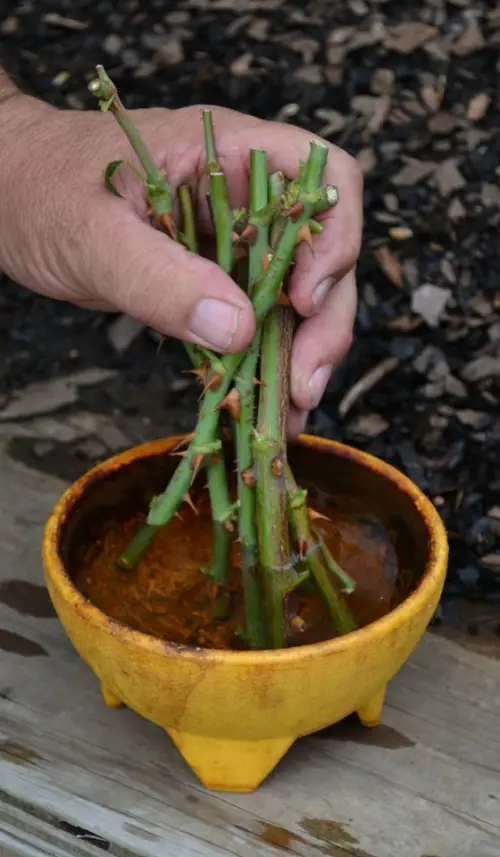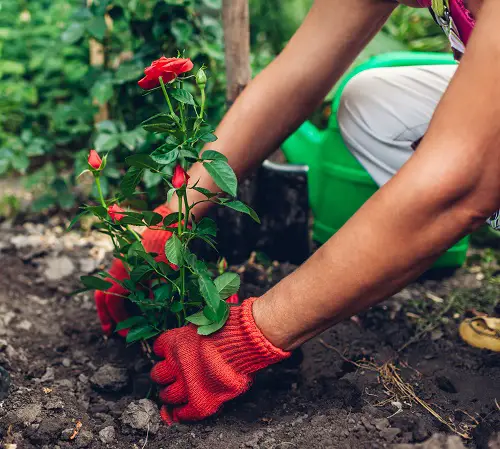Don’t toss that bouquet in the trash, as you can grow roses from the flowers in it! Sounds too good to be true? Read on!
We all get bouquets on special occasions, and the ones with roses are the favorite of us all! So the next time you toss it into a dustbin, think twice, as you can use it to grow new plants! Surprised? Don’t be! Learn all about How to Grow Roses from Bouquets!
These Are The Best Flowers You Can Grow From Bouquets
Which Roses Propagate Easily from Bouquets?
When propagating roses from bouquets, Heirloom, and shrub roses, such as Rosa rugosa, Rosa gallica, and Rosa canina, are known for their hardy nature and strong genetic traits, making them ideal candidates for propagation from cuttings. Modern hybrids such as hybrid teas, floribundas, and some grandifloras may also propagate well.
Conversely, miniature roses, climbing roses, and varieties with weak disease resistance or less vigorous growth, such as ‘Peace’ and ‘New Dawn,’ can be more challenging to root from bouquets. Do your research on specific varieties to optimize the chances of successful propagation.
How to Grow Roses from Bouquets?
1. Prepare Cuttings

The first step is getting a healthy stem to use for cutting. Look for one that has 2-4 growth nodes or joints. It shouldn’t have any brown color and should be healthy. Once you have it, get rid of all the leaves and detach the main flower (so the cutting focuses on root development).
Pro Tip: You can also scratch the sides of the stem near the base for better water absorption and root formation.
2. Rooting Cuttings in Water
Take a 6-8 inches container and fill it with water. Place the prepared cutting into the water, ensuring the bottom 1-2 inches gets completely submerged. Replace the water every few days and wait patiently for several weeks until roots or scar tissue develop.
Once the cuttings have formed roots, transplant them into a pot filled with a rose potting mix or a combination of sand and vermiculite.
3. Rooting Cuttings in Soil
Grab a 6-8 inch pot and fill it with a special rose potting mix. Before you place the stem in the soil, you can give it a dip in rooting hormone, which will boost its successful growth!
Make a small hole in the soil with your little finger and tuck the cutting in it. Use your thumbs to gently press the soil so it supports the cutting. Give it a bit of water as well. You can also cover the pot with a small plastic bag or wrap for a mini greenhouse effect. Don’t let it touch the cutting, though. Keep it near a sunny window, and voila!
Aftercare
A. Check Moisture Levels
Bouquets are misted every now and then to keep them looking fresh, so you need to keep an eye on the moisture and make sure that the roses aren’t under water stress.
Roses need at least an inch of water per week, so give them a good soak and let the soil dry before watering again. This goes for both container and garden bed rose plants.
B. Gradually Switch to a New Environment
Once the cuttings root and start growing, you should ease them into new surroundings. Start by getting rid of the plastic cover for a few hours each day, and after a week, remove it completely.
C. Gentle Fertilization
When those roots start to take hold, it’s time to give them a little food. You should go for a gentle, balanced fertilizer made just for young plants or cuttings. Aim to feed every 4-6 weeks during the growing season to keep your roses happy and healthy.
D. Provide Support
As your rose babies grow, they might need a little support along the way. Stakes or cages are good to keep them standing tall, especially if you’ve got some long-stemmed varieties.
E. Pruning
Don’t forget about pruning, as it is like giving your roses a haircut to keep them looking their best. Wait until late winter or early spring to snip away any dead or damaged branches and encourage that lovely bushy growth.
F. Mulch
Show your roses some extra care with a nice mulch blanket. It will help keep the soil moist and fight off those pesky weeds. Just layer on 2-3 inches of organic mulch like bark or compost, and your roses will be living their best life.






